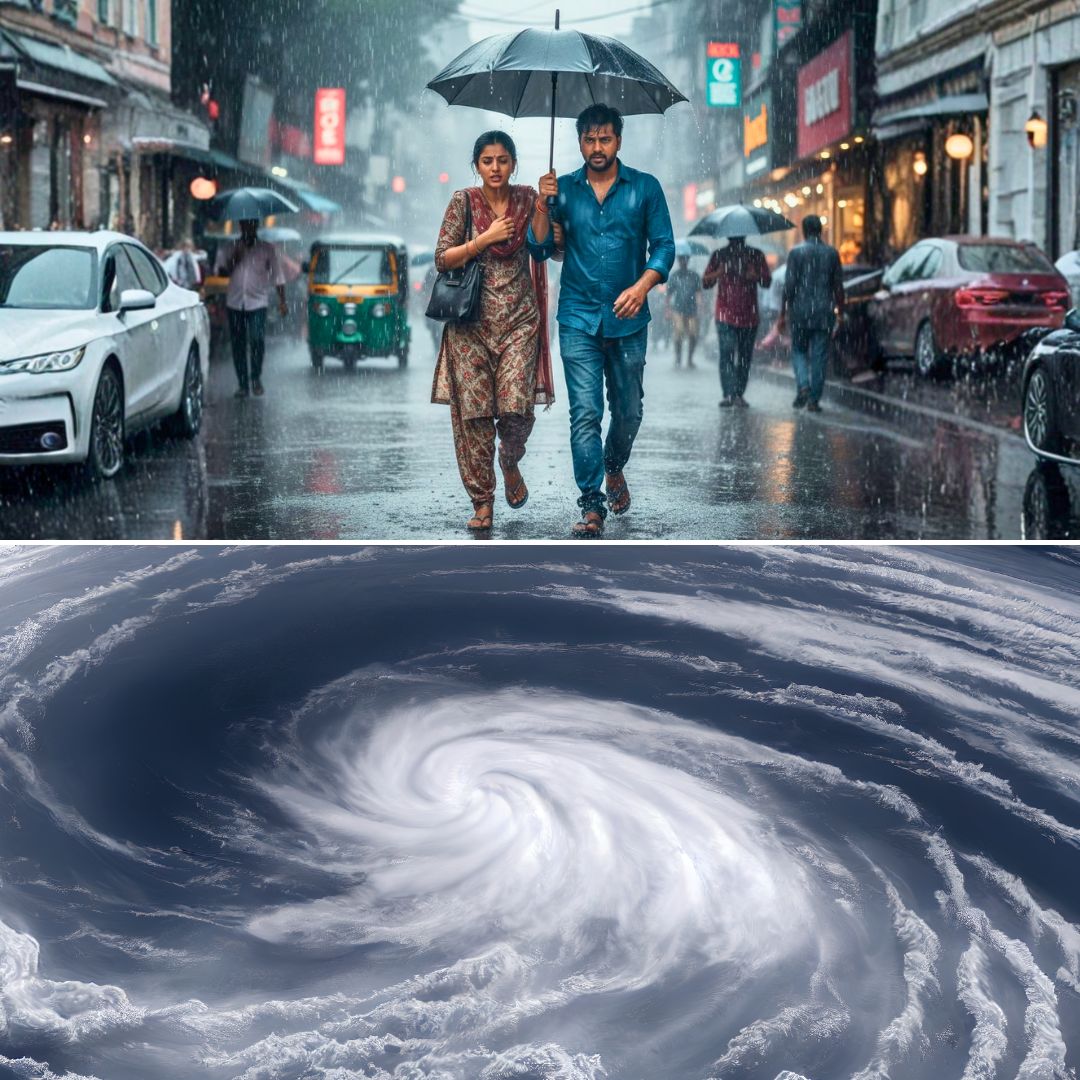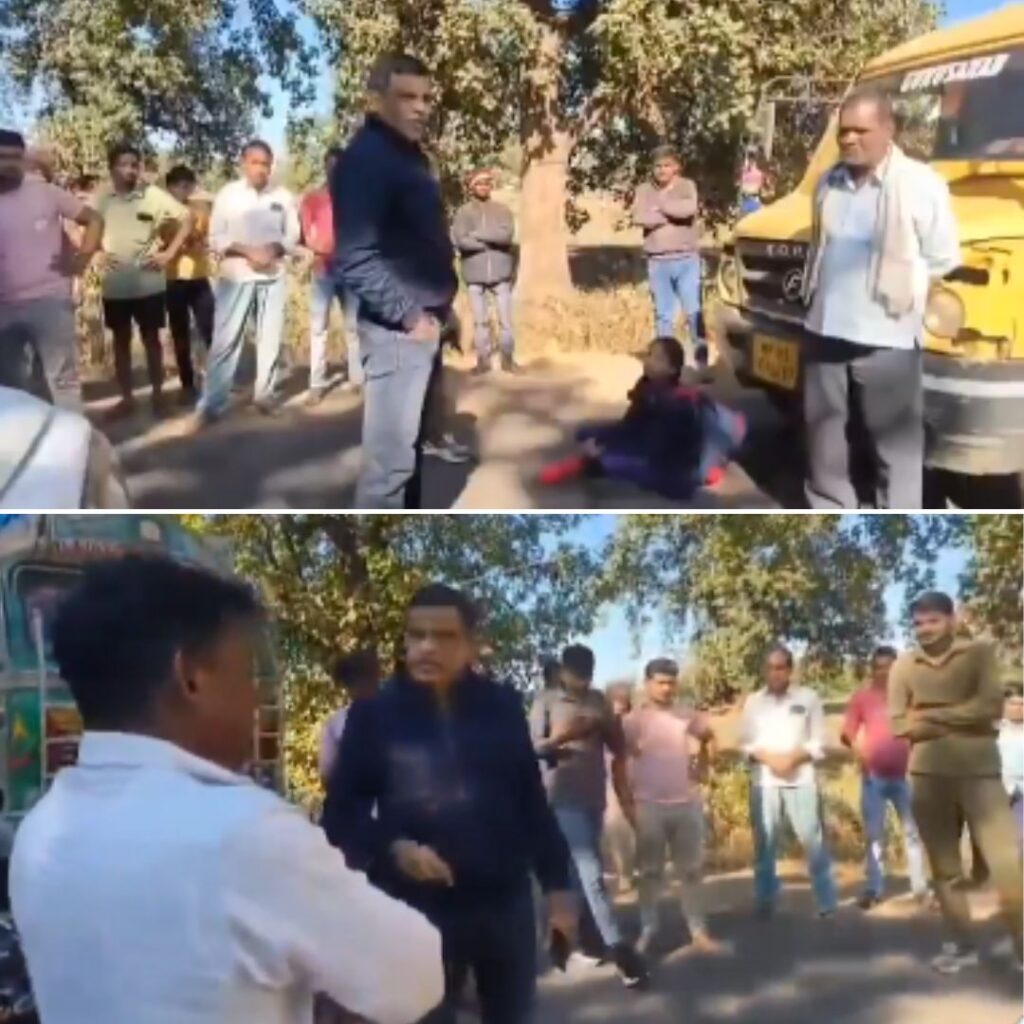A depression over the South Andaman Sea and southeast Bay of Bengal is on track to intensify into Cyclone ‘Montha’ by October 27. The storm is projected to bring very heavy rain and strong winds to Tamil Nadu, Andhra Pradesh, Odisha, and West Bengal, with the IMD issuing an Orange Alert for critical districts.
Governments have ramped up emergency measures, and public advisories call for travel caution, including airport and fishing restrictions, as residents brace for the storm’s landfall and disruptive impact.
What Is Cyclone Montha?
Cyclone Montha is the impending storm named under the World Meteorological Organization/ESCAP panel’s system, with “Montha” meaning “fragrant flower” or “beautiful flower” in Thai. This will be the fifth named cyclone over the Bay of Bengal in 2025.
It is currently a well-marked depression and is likely to intensify into a severe storm by October 27, with peak wind speeds between 70 and 100 km/h as it nears the coast. The cyclone is expected to cross near Andhra Pradesh or northern Tamil Nadu late on October 28 or early October 29, threatening widespread rainfall, flooding, and disruption.
How Do Cyclones Arise and Impact People?
Cyclones originate from low-pressure systems over warm ocean waters, particularly during the post-monsoon season. As air spirals inward and upward, it fuels cloud formation and intensification, producing severe winds and rain.
For coastal residents, such systems can bring devastating floods, building damage, agricultural losses, and risk to life. Flight operations, ports, and public transit often face disruptions, and widespread power outages and waterlogging can paralyse cities like Chennai and Visakhapatnam.
Past Cyclone Disasters in Tamil Nadu
Tamil Nadu is no stranger to cyclonic devastation. In 2015, Cyclone Vardah battered Chennai, uprooting thousands of trees and halting power for days. Cyclones Gaja (2018) and Nivar (2020) led to major agricultural and infrastructure damage, with fatalities and mass evacuations.
These events have prompted advances in early warning, disaster relief, and community shelters, but significant challenges remain in safeguarding vulnerable populations.
Government & Public Preparedness
The Tamil Nadu government has mobilised 24,149 officials for relief, readied over 1,400 motor pumps and 103 boats, and opened more than 215 relief camps and 106 community kitchens in anticipation of flooding. Fisherfolk have been strongly advised to avoid the sea till at least October 28, and those already at sea are urged to return immediately.
Airport authorities may suspend operations if crosswinds intensify, and IMD has recommended postponing all non-essential travel on October 27 and 28. The Greater Chennai Corporation is conducting storm-drain clearance, monitoring vulnerable neighbourhoods, and deploying rapid response teams. Andhra Pradesh and Odisha have similar advisories, with all coastal regions on alert for evacuations if river levels rise or embankments breach.
Airport & Public Advisory
Airports in Chennai and neighbouring cities have warned of possible flight delays and cancellations during peak storm impact, urging travellers to check updates and plan accordingly. Residents are encouraged to store essential items, secure property, and heed evacuation instructions when issued.
The public is advised to strictly avoid seafronts, riverside areas, and poorly sheltered buildings during and after landfall. All citizens are encouraged to follow government helplines for emergency assistance and travel advisories.
The Logical Indian’s Perspective
Cyclone Montha’s approach is a reminder of the unpredictability of nature and the essential role of science-backed early warning and citizen cooperation. As authorities boost relief and awareness efforts, community vigilance can save lives.
News in Q&A
1. What is Cyclone Montha and where will it hit?
Cyclone Montha is a new tropical system developing over the southeast Bay of Bengal, likely to intensify into a full-fledged cyclone by October 27, 2025. Current projections indicate a possible landfall near the Andhra Pradesh coast around October 28 or 29, but widespread rain and strong winds are expected in Tamil Nadu, Andhra Pradesh, Odisha, and West Bengal.
2. Why have authorities issued alerts and what is the latest government response?
The IMD has issued orange and red alerts across multiple coastal regions in anticipation of extremely heavy rainfall, high winds, and storm surges that could cause flooding, property damage, and disruptions to daily life. Over 24,000 personnel have been deployed for relief, 215+ relief camps set up, and emergency preparations initiated including airport advisories and bans on fishing activity.
3. How do cyclones like Montha form and what impact might it have on the public?
Cyclones arise from low-pressure areas over warm ocean waters, drawing in moist air that intensifies into a dangerous system of winds and rain. Such storms have a history of causing crop loss, urban flooding, damage to homes, disruption to transport and power, and—if severe—loss of life. Montha could see wind speeds up to 100 km/h, threatening vulnerable communities along the eastern coast.
4. How is the public being advised to prepare and stay safe?
Authorities advise the public to avoid unnecessary travel, especially by air or sea, as airports may delay or cancel flights and coastal conditions are expected to be dangerous through October 28. Residents in low-lying or seaside regions should be prepared for evacuation, store essential supplies, heed official warnings, and use government helplines for updates or emergency assistance.
5. Are there any new developments, concerns, or expert commentary?
Recent advisories caution that the system’s exact path may still shift, and cities like Chennai could see only moderate rainfall if the cyclone veers northwards. Weather bloggers and experts warn about localised flooding, while civic bodies continue to coordinate with disaster management teams. The situation remains dynamic, with the IMD urging “maximum preparedness” and real-time vigilance as forecasts develop.












